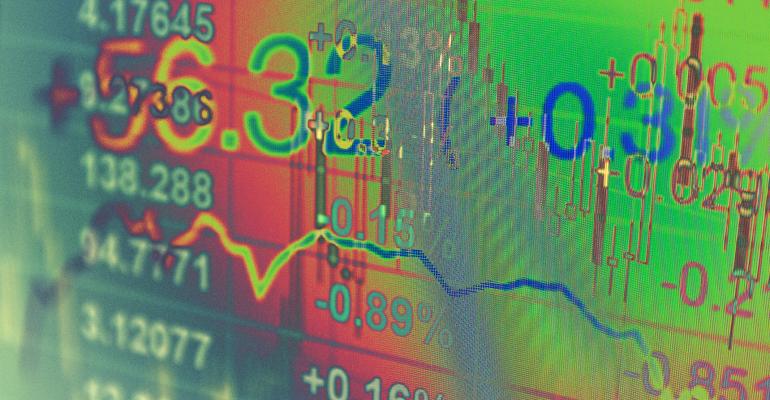Have a short-term view on high yield? Maybe an exchange-traded fund (ETF) is right for you. But if you want long-term exposure to this market, ETFs are a terrible choice.
The numbers speak for themselves. Over the first nine months of the year, the two largest ETFs—HYG and JNK—have sharply underperformed the average active manager, not to mention their own benchmarks.
ETFs’ longer-term performance falls short, too. In fact, not only have active managers outpaced ETFs over the long run, they’ve done it with lower volatility, as measured by risk-adjusted returns. The Sharpe ratio, which measures return per unit of risk, was 0.43 for JNK and 0.48 for HYG between 2008 and September of this year. For the top 20% of active high-yield managers, it was 0.69.
From the perspectives of both absolute return and risk versus return, high-yield ETFs are a bad long-term investment.
ETFs Better for Short-Term, Tactical Trading
Does this mean ETFs serve no useful purpose? Of course not.
For traders who want short-term, tactical exposure to high yield, there’s no better way to get it. This might be for the purposes of hedging overall portfolio risk or for taking a short-term view.
For instance, if an investor thinks high yield is rich and likely to sell off in the next week or two, an ETF might be the way to play that. Because ETFs trade on exchanges like stocks, the investor could get in and out of the market quickly. ETFs also tend to overshoot in both directions, making them attractive for expressing short-term, tactical views.
ETFs also mean more buyers and sellers. That can make it easier to trade in a market that has never been as liquid as other parts of the fixed-income universe.
Low Cost? Not as Low as You Think
We’re not convinced, however, that short-term traders are the only ones rushing into ETFs. Over the past six weeks alone, US-domiciled high-yield ETFs pulled in almost $2.7 billion, according to EPFR Global. A large share of that money probably came from investors who want long-term, strategic high-yield exposure.
So what is it that attracts them? Financial advisors who use ETFs in their clients’ portfolios often tell us that investors like ETFs because they offer passive, low-cost exposure to the market.
The problem is that that’s not really the case. Some ETF management fees are lower than mutual fund fees, but that mostly goes for those that invest in highly liquid assets such as equities.
In a less liquid market like high yield, expense ratios are often not that different from those charged by actively managed funds. For example, HYG has an expense ratio of 0.5%. JNK’s is 0.4%. Those fees can be quite a drag on performance and often make it hard for ETFs to beat broad market benchmarks.
There are other hidden costs, too. Ratings upgrades and downgrades mean that bonds go into and out of high-yield benchmarks often—certainly more often than stocks enter and exit the S&P 500 Index. To keep up, ETF managers have to trade the bonds that make up the index more often. The trading costs can add up.
How Active Managers Add Value
Here’s another way in which high yield isn’t like the stock market: the average life of a high-yield bond is about five years. That means investors have to frequently reinvest bonds that mature, are called or are tendered. A skilled active manager is likely to make better decisions about how to redeploy this income.
Being tied to an index also means ETFs can’t pick and choose their exposures the way active managers can. Many investors learned that the hard way this year when oil prices fell. That was bad news for energy bonds, which account for a sizable share of high-yield indices. Active managers could have strategically reduced their energy exposure. ETF investors didn’t have that option.
Add up all these costs and complications, and it’s no wonder that high-yield ETFs have underperformed. Investors are fooling themselves if they think ETFs are an acceptable way to get high-yield exposure. An active approach should reduce costs and offer a better chance at high returns with less risk.
The views expressed herein do not constitute research, investment advice or trade recommendations and do not necessarily represent the views of all AB portfolio-management teams.
Gershon Distenfeld is Director of High-Yield for AB (AllianceBernstein)





